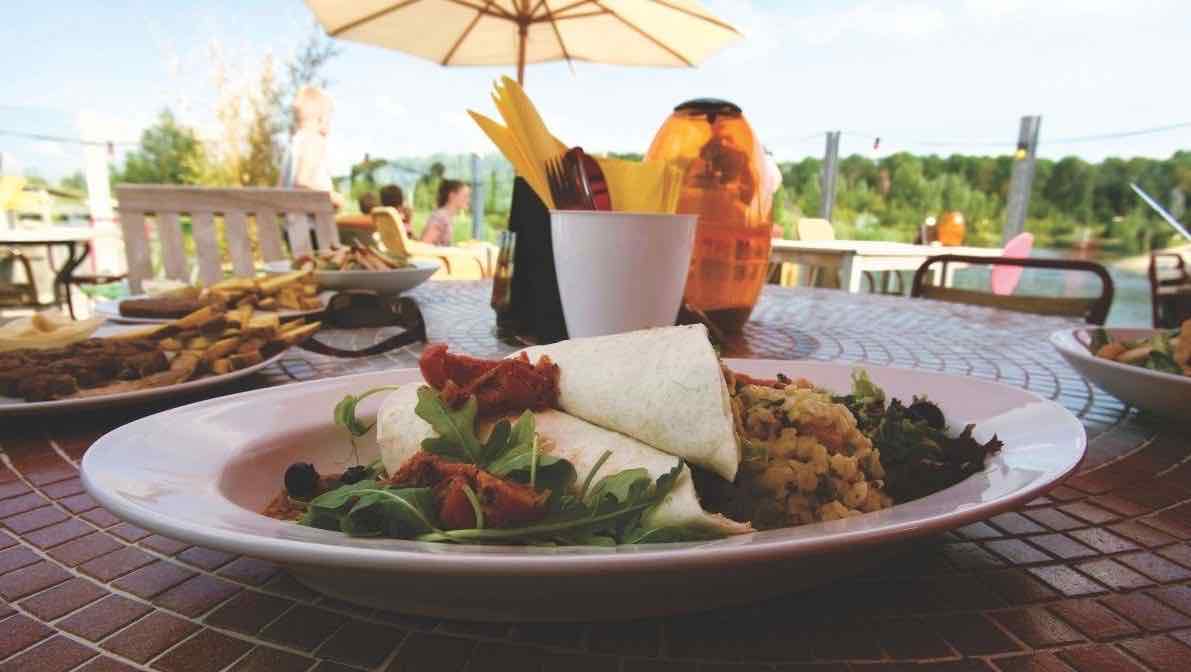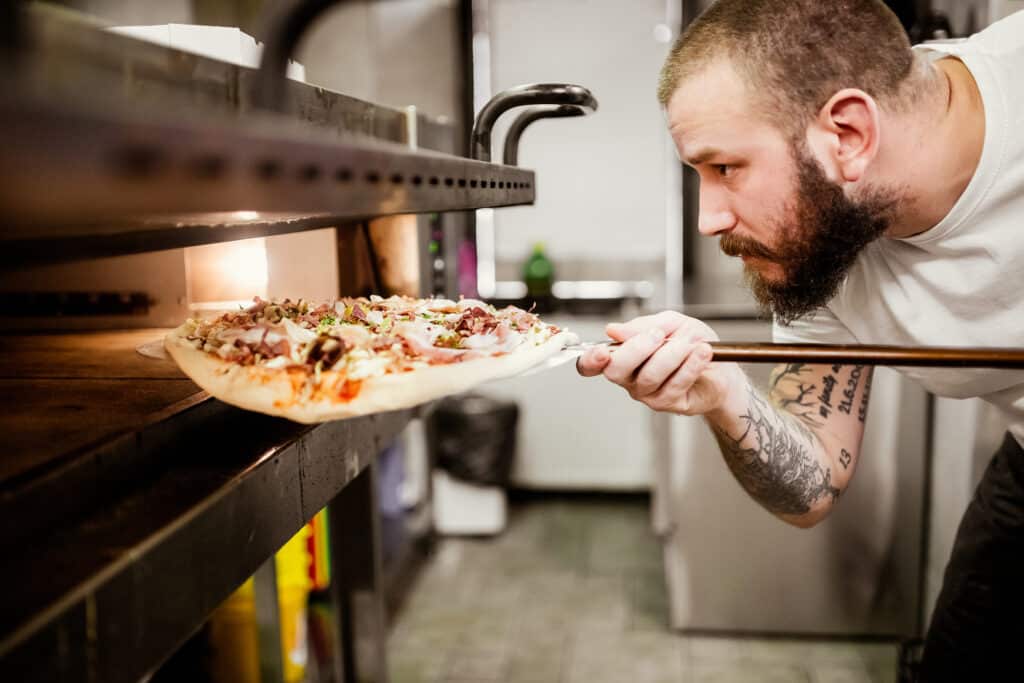When it comes to writing a restaurant menu, you can’t determine your menu prices by “gut feeling.” You need hard numbers and data to fuel your decisions. Then you can weigh those variables appropriated in order maintain a successful menu.
But before you even look at your ingredient lists and food costs, or do any recipe calculations, it’s important to do some market research.
Market/Competitive Research
Odds are, you’re not the only one in town offering most of the things on your menu. The first step in successful recipe costing is analyzing what that market looks like. Find out what other restaurants are charging for your respective dishes. With online ordering systems, this is easier than ever.
Once you have a good understanding of average prices, think about how your recipe differs from that competition. Maybe you use better (or more) ingredients. Maybe you’re after a different clientele. While your prices don’t need to be an exact match of your competitors, or undercut them, keep in mind how price might impact your demographic. The more price sensitive they are, the more competitive pricing matters.
For more great tips check out other blogs in this food cost management series:
- Learn the difference between recipe costing vs. food costing
- Learn how to reduce your food cost percentage
- Learn how to calculate food cost percentage
- Learn how to master menu engineering to make your menu a moneymaker
What is recipe costing?
Recipe costing is tracking the cost of every individual ingredient you are using for a single dish. It covers the individual ingredients for the menu item’s portion size, down to the penny.
Consistent, accurate recipe costing relies on a few key elements: standardized recipes, accurate restaurant inventory management, and up-to-date vendor prices. With this many moving pieces, it is essential to have full integration between your restaurant management solutions, like your restaurant accounting software, inventory management software, and your point of sale (POS) system.
How to calculate recipe cost
How do you cost out a recipe? The basic concept of recipe costing starts with breaking down a food item into all of its individual ingredients. You need to rely on standardized recipes that have been formatted across your restaurant group. From there, calculate the usage and yield of each food item in the recipe, and assign it an exact dollar amount.
Automating as much of this recipe costing process as possible not only saves your team time, but it also ensures better accurate results. For example, since recipe cost depends on the cost of ingredients, it’s essential to have the most recent vendor pricing in your system. Automating accurate pricing through a full integration with your vendor invoicing ensures your team doesn’t waste time updating prices whenever there is a price change.
Recipe costing used to frequently be done by hand, which required manual calculations that were time consuming and prone to error. However, with new recipe costing software, you can leverage standardized recipes, up-to-date vendor price lists, and an ingredient cost database to automatically make calculations. (If you don’t have recipe costing software, try our free recipe cost calculator by clicking on the banner above or scrolling down to the bottom of this blog post.)
Using your recipe cost to optimize profit margin
Recipe costing can inform everything from determining your restaurant food costs to the menu updates that impact profitability.
To hit your profit margin goal, you need to hit your target food costs. Recipe costing is powerful because it allows you to examine the sales margins on individual menu items and see which items need to be adjusted to make that goal. If you aren’t hitting your ideal profit margin, you can use the recipe costing information to either adjust your food cost or change the menu price.
Getting the most out of your recipe costing
Once you are accurately tracking your recipe costs in your restaurant management system, it’s time to apply it to different areas of your restaurant operations. Here are a few key places to start:
Track Usage and Yield on Each Food Item
Getting truly accurate recipe costs requires diving deep into the usage and yield your ingredients get in your recipes.
For example, some kitchens may stop at costing out the average cost of an ingredient like tomatoes in recipes. However, if you use tomatoes in multiple prep recipes, the cost percentage of that ingredient may vary. Let’s say a menu item uses tomato sauce, chopped tomatoes, and pico de gallo—each of these items is prepared differently, and the usage and yield may range.
Getting down to the granular level of your ingredients allows you to gain more precision in your restaurant food cost calculations. Although it requires extra work, the more accurate you can get each and every element of your recipe costing, the more useful this information will be in your decision making.
Analyze Actual vs. Theoretical Food Costs
If your restaurant inventory management software is integrated with your accounting and POS, you can also map your inventory against sales and track your theoretical usage of these ingredients over time.
Actual versus theoretical (AvT) food cost tracking is a powerful tool to control your food costs. Once you have your recipe costs standardized and input into your restaurant management system, you can track the theoretical food cost, or what you should have spent making menu items over a given period (assuming no mistakes and no waste). Then, you can compare this theoretical cost to your actual food cost—what you actually spent given your real-time sales and inventory levels.
The variance between these actual versus theoretical food cost numbers represents a leak in your profit margin that you have an opportunity to address. As you dial in your recipe costs and track what’s causing the variance, you can fine tune your BOH operations.
Ultimately, although you can measure out your exact recipe cost, your actual restaurant food cost depends on how your kitchen staff preps and portions ingredients. By examining the variance between your actual and theoretical costs, you can ensure proper training and execution.
Optimize Your Menu for Profitability
Recipe costing also informs menu engineering–a key tool for planning and designing your menu to maximize profitability. Menu engineering maps both profitability and popularity of menu items, so you can make decisions about which individual menu items to promote, adjust, or retire.
To determine the best menu price for your profit margin, you need to first start with an accurate recipe cost. As you consider changing prices on certain menu items, you can also use your recipe costing information to experiment with changing portion sizes or ingredients to maintain the item price but increase the margin.
Simplify Recipe Costing with Automation
An automated inventory management system with recipe costing can help you maintain consistent, up-to-date information. Especially if your ingredient prices fluctuate seasonally, having new vendor prices automatically pulled from your vendor invoices can replace your team spending time manually inputting invoices.
Reducing food waste
Recipe cost and food cost tracking gives restaurant owners and operators insight into how your teams are managing ingredient usage. To add in efficiencies with your restaurant food costs, you need to cut down on food waste.
Restaurant inventory management involves tracking the ingredients going in and out of your restaurant. Your AvT analysis is key to show you where to start. Advanced tools like food waste trend reports, prep production stats, and recipe costing by location or time period can continue to help you identify any inconsistencies and get to the root of the problem in your kitchen.
Adjusting to rising food costs
Your restaurant may have faced vendor fluctuations over the course of the last year, adding rising food costs to your list of operational challenges. If higher food costs are inflating your food cost percentage, start by examining your top-selling or most expensive items first.
You have many different options to respond to rising food costs. You can examine your recipes to see if you can adjust portion sizes, or potentially change to less expensive ingredients. You can also use your food cost tools to take a closer look at your prep efficiency. Finally, you also have the option to adjust menu prices to reflect the new food cost reality. Your decision will change depending on the menu item but having recipe costing information in hand will ensure you’re making a data-driven decision.
Conclusion
Understanding how to cost out a recipe used to be an optional operational tool, but in today’s challenging environment, it’s now essential for a profitable business. With automation and a strategy for implementation, managing your restaurant group’s recipe costs can help you optimize your profit margin across your menu.
If you’d like to leverage recipe costing to track food costs, control food waste, and optimize profit margin, consider an all-in-one restaurant management system, now with the new Smart Ops Release. Restaurant365 incorporates restaurant accounting software, restaurant operations software, inventory management software, payroll + HR software, and scheduling software into a cloud-based platform that’s fully integrated with your POS system, as well as to your food and beverage vendors, and bank.



